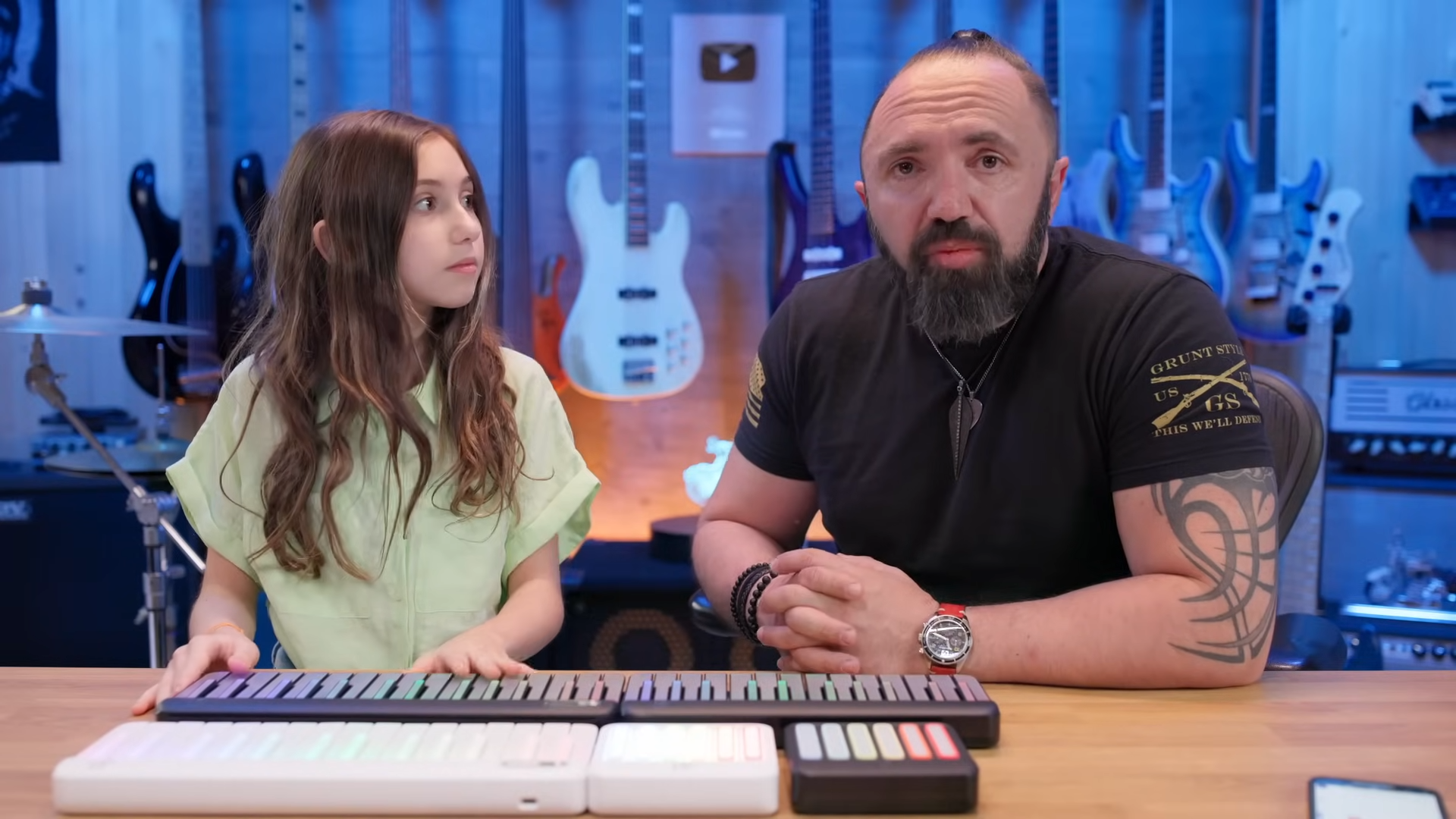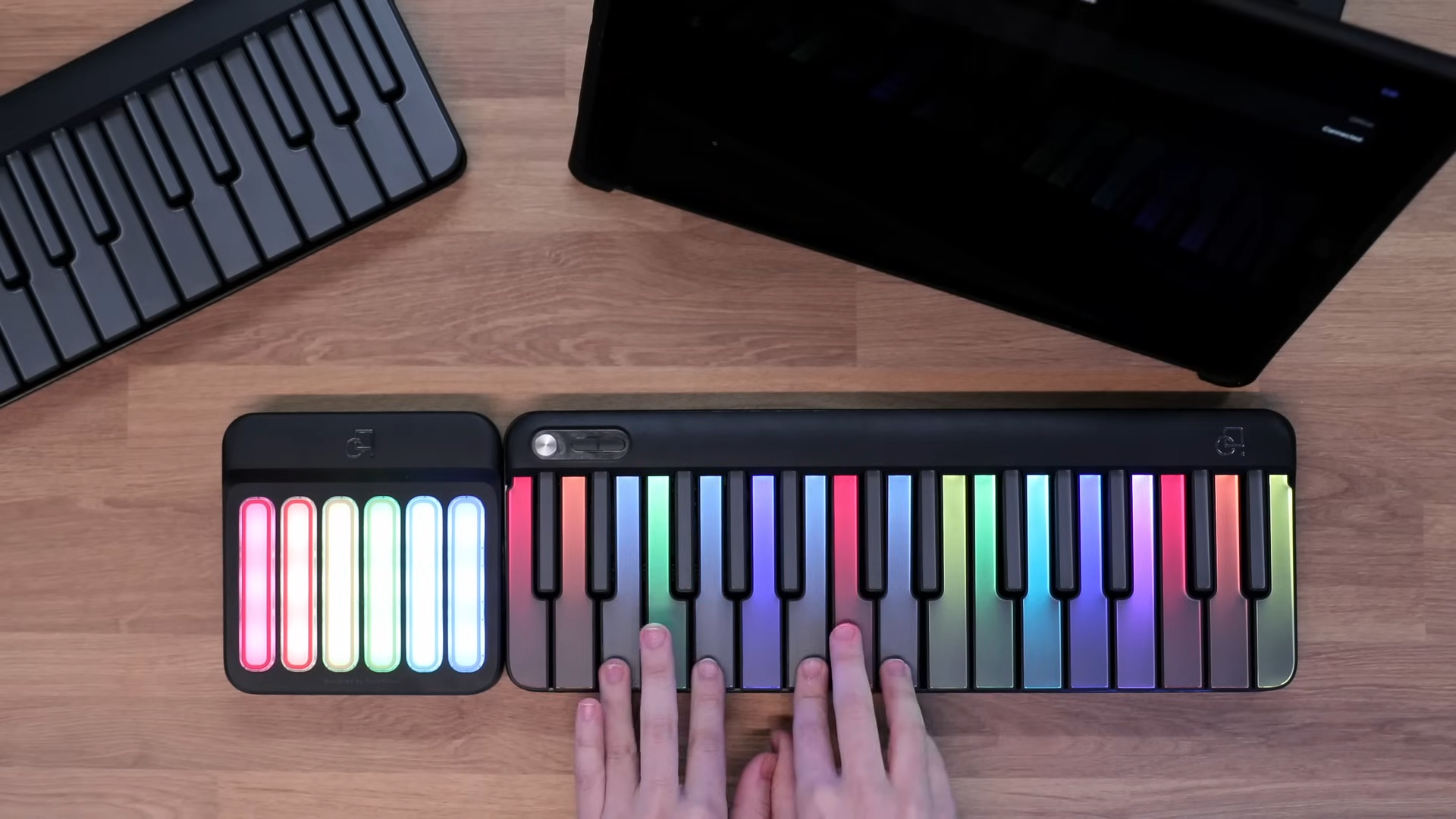Can you learn piano without a teacher? Yes—millions of beginners get started on their own and make steady progress with the right plan.
If you’ve ever asked “can you teach yourself piano?” or searched for how to learn piano by yourself, this guide walks you through a practical, no‑drama path.
With a simple plan and 20–30 minutes a day, most self-taught beginners can:
-
1–4 weeks: play a full right-hand melody and a two-hand easy song at slow tempo
-
2–3 months: comfortably play several two-hand pieces, basic chords, and keep time with a metronome
-
6–12 months: reach solid beginner-to-early-intermediate (hands together, dynamics, simple arpeggios, chord progressions)
-
2–3 years: mid-intermediate repertoire, better technique, play by ear and from lead sheets
-
5+ years: advanced fluency (depends on goals, repertoire, and consistency)
The Minimal Setup You Need to Start Today

You don’t need a giant console or expensive lessons to begin. Here’s a friendly checklist:
-
A reliable keyboard. Any digital keyboard with velocity‑sensitive keys works. Compact sizes are fine to start; just choose one you’ll keep within reach.
-
Quiet practice options. Headphones encourage daily practice—no worrying about roommates or sleeping kids.
-
Guidance you’ll actually follow. A light‑guided system and app lessons can show finger positions, wait when you miss, and loop tricky bars.
-
Metronome & tuner (in the app). Rhythm is the backbone of good playing.
-
Optional extras. A stand for posture, a sustain pedal for expression, and a simple recording app for tracking progress.
If you’d like built-in visual guidance, look at a light‑guided smart keyboard that pairs with a lesson app and quick start courses. You can explore a good example on this page.
What actually determines your timeline
-
Consistency beats intensity – 20 focused minutes daily > a single 2-hour cram.
-
Quality of feedback loops – slow practice, looping hard bars, recording weekly takes.
-
Repertoire choice – songs you love keep practice sticky.
-
Technique hygiene – posture, relaxed wrists, finger numbers, slow metronome work.
-
Tools & guidance – light-guided lessons, play-along apps, and MIDI recording speed up early wins.
A practical 30/60/90-day roadmap (self-study)

Days 1–30: Momentum & First Wins
Goal: finish two songs end-to-end (one hands-together at slow tempo).
Daily (20–25 min):
- 3 min: five-note warm-ups (C-D-E-F-G), count out loud
- 12 min: guided right hand → add simple left-hand pulses
- 3 min: metronome claps or quarter-note chords (60–70 BPM)
- 2–5 min: free play (improv on the notes you learned)
Milestones by Day 30
- one right-hand melody cleanly
- one simple two-hand piece at 70–80% tempo
- can keep a steady pulse with a metronome
Days 31–60: Hands Together & Control
Goal: three songs total; introduce dynamics and pedaling.
Daily (25–30 min):
- 5 min: slow scales (C major), relaxed wrists, light fingers
- 10–12 min: hands-together work, loop 2–4 bar trouble spots
- 5 min: dynamics practice (soft verse, louder chorus)
- 5–8 min: chord patterns (I–V–vi–IV; e.g., C–G–Am–F)
Milestones by Day 60
- play two songs hands-together at full or near-full tempo
- basic sustain pedal timing on long notes/chord changes
- record one clean weekly take you’re proud of
Days 61–90: Fluency & Variety
Goal: 4–5 playable pieces; begin simple arpeggios & rhythm grooves.
Daily (30 min):
- 5 min: scale or five-finger patterns in 2 keys
- 10–12 min: song #3/#4, focus on tone and balance (RH melody, LH quieter)
- 5–8 min: left-hand arpeggios (broken chords)
- 5 min: “musicianship block” — sight-read 8 bars, or ear-copy a short hook
Milestones by Day 90
- consistent timing with a click at 80–100 BPM on easy pieces
- two contrasting styles (e.g., ballad + pop groove)
- comfort switching between reading, play-along visuals, and ear learning
Technique Basics You Shouldn’t Skip

When you’re teaching yourself piano, a few fundamentals prevent bad habits:
-
Posture: Sit toward the front of the bench, shoulders down, forearms roughly parallel to the floor.
-
Hand shape: Relaxed, rounded fingers—imagine lightly holding a small ball.
-
Finger numbers: 1=thumb to 5=pinky. Many beginner pieces include finger hints; follow them at first.
-
Wrist & arm: Loose and buoyant; avoid locked elbows.
-
Pedal: Add sustain later—first get clean, connected notes without it.
Five minutes of mindful technique per session pays off fast.
Reading Music vs. Playing by Ear—Do You Need Both?

If you ask “can you learn piano without a teacher?”, you may wonder whether you must read sheet music on day one. You don’t. Many beginners start with guided songs and ear training (recognizing patterns by sound), then add reading gradually.
A balanced approach:
-
Start with following lights or on‑screen “waterfall” notes to map finger positions quickly.
-
Introduce simple notation (treble clef first) in Week 2–3 once you can play one song.
-
Connect the dots: Notice how recurring shapes on the staff match the hand shapes you’ve learned.
This blend keeps motivation high while building real literacy over time—an ideal recipe for anyone teaching yourself piano.
Smart Tools That Make Teaching Yourself Piano Easier

Adult beginners: how your timeline differs
-
Attention span & schedule: short, frequent sessions work better than long weekend marathons.
-
Motor learning: slow, relaxed repetitions build reliable muscle memory; tension is the enemy.
-
Motivation: pick songs you genuinely enjoy and set micro-goals (8 bars clean by Friday).
-
Reality check: you can sound musical early with good tone, dynamics, and timing—even on simple pieces.
“Both hands” milestone (and how to get there faster)
Many self-learners stall combining hands. Use this 3-step merge:
-
Hands alone, perfectly slow. Each hand 3 clean loops at a slow click.
-
Add coordination points. Identify where hands hit together; say “TOGETHER” out loud there.
-
Stair-step tempo. +5 BPM only after 3 clean hands-together runs.
Result: most beginners can play a first two-hand piece within 3–4 weeks at slow tempo, then bring it to speed by weeks 5–8.
Reading music vs learning by ear (you don’t need to choose)
-
Start with follow-lights / play-along visuals to map keys quickly.
-
Add simple notation by Week 2–3 (treble clef, note names off, landmark notes).
-
Keep ear skills alive: sing the melody before you play; find it on keys; copy simple bass lines.
Balanced learners progress faster and stay motivated longer.
A simple weekly routine (keeps you improving for years)
-
Mon/Wed/Fri: core song work (hands together, metronome, loop hard bars)
-
Tue: technique (5–10 min scales, 5 min arpeggios) + new 8-bar reading
-
Sat or Sun (optional): creativity day—chords + singing, record a sketch, or free improv
Track four things: practice streak, fastest clean tempo, repertoire list, and weekly recording. That’s your private teacher.
What “levels” actually feel like (self-taught)
-
Basic (1–3 months): easy two-hand pieces; steady quarter-notes; simple chords; 60–80 BPM cleanly
-
Early-intermediate (6–12 months): multiple songs at performance tempo; dynamics, pedaling, syncopation; read lead sheets; start playing by ear
-
Intermediate (2–3 years): arpeggiations, broken-chord LH, wider hand shapes; pop/jazz voicings; simple classical studies
-
Advanced (5+ years): demanding repertoire, fast articulation, expressive control, arranging and improvisation
Common blockers (and quick fixes)
-
Rushing tempo: lock a slow click; 3 clean loops before any +5 BPM increase.
-
Only starting from bar 1: loop 2–4 bar fragments; begin 2 bars before the trouble spot.
-
Tension/flat tone: play a passage as quietly as possible—relax shoulders, floating wrists.
-
Left hand too loud: practice RH alone forte, LH alone piano; then combine.
-
Plateau: switch songs or styles for 1–2 weeks; return fresh.
The self-teaching toolkit (no teacher required)
-
Guided lessons with visual prompts: follow-lights or “waterfall” notes that wait for you.
-
Metronome + tempo slider: slow down without changing pitch; inch up in small steps.
-
Practice loop & section markers: repeat the hard bar automatically.
-
MIDI recording to a DAW: hear timing and dynamics; layer tracks for fun.
-
Song library you love: familiarity keeps you consistent.
How to Measure Progress Without a Teacher

When you learn how to play piano by yourself, you still need feedback loops. Try these:
-
Weekly recording: One take per week for each song. Note timing, pauses, and dynamics.
-
Tempo log: Write the fastest clean tempo you can play; update every few days.
-
Repertoire list: Keep a “songs I can play end‑to‑end” note. Add dates; it’s motivating.
-
Streaks: Track practice days, not minutes. Even 10 good minutes counts.
When to Add Feedback or Micro‑Lessons
Even if the answer to “can you learn piano without a teacher?” is yes, a little outside input can accelerate progress:
-
Month 2–3: Consider a single video lesson or feedback session to correct posture and hand motion.
-
Plateau moments: If a section won’t land after a week, a short check‑in with a tutor (or a knowledgeable friend) can save time.
-
Specific goals: For classical technique, jazz voicings, or exam prep, a structured course or periodic coaching is worth it.
Final thoughts
You can absolutely learn piano by yourself—and enjoy it—if you keep sessions short, use clear visual guidance, and work in tiny loops with a slow click. In the first 90 days you’ll build real momentum: multiple songs, cleaner timing, and the confidence to keep going. From there, it’s just repetition and better taste.
Keep it relaxed. Keep it slow. Keep it daily. The rest takes care of itself.
Frequently Asked Questions
Is it possible to teach yourself piano as a total beginner?
Yes. Use play-along visuals or light-guided lessons, slow tempo, and short daily sessions. Add notation gradually in Week 2–3.
Do I need 88 keys to start?
No. A compact, velocity-sensitive keyboard is fine. You can upgrade or add range later.
How many minutes should I practice?
20–30 minutes a day, 5 days a week is enough to make steady progress. Consistency > marathon sessions.
Should I start with sheet music or chords?
Either path works. A blended approach (follow-lights + simple lead sheets + basic reading) keeps motivation high while building real skills.
What if I plateau?
Switch songs or styles for a week, lower tempo, and use short looped sections. A quick external check-in can also unlock sticking points fast.


